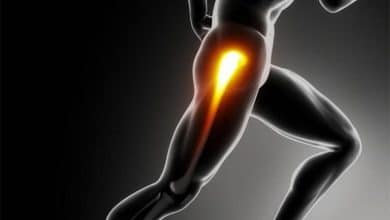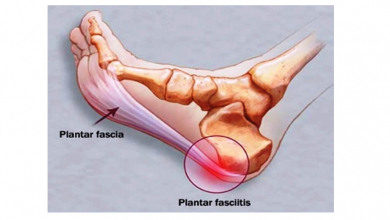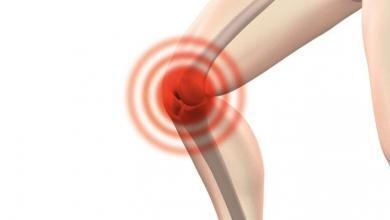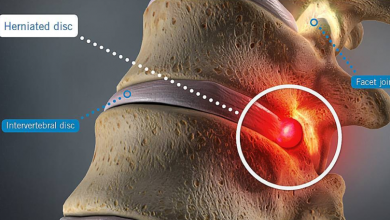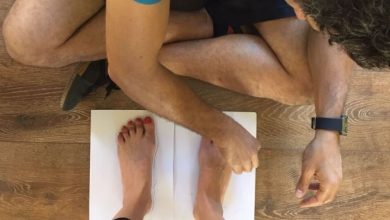The tibia and fibula: everything you need to know about their fractures
The tibia and fibula are bones that are part of the lower leg. These bones can suffer fractures due to different reasons. The symptoms are pain, inflammation, bruising and functional disability.
Treatment will depend on the severity and may include immobilization, surgery, and rehabilitation. Physiotherapy is essential to recover lost functional capacities during immobilization. Recovery can take anywhere from 3 to 12 months and there may be possible complications.
What are the tibia and fibula
The tibia and fibula are 2 of the most important bones in the leg. The tibia It is the 2nd largest bone in the human body, after the femur, and is located on the inside of the leg. On the other hand, the fibula it is much thinner than the tibia and is located on the outside of the leg.
Both bones are connected through the ankle joint. The tibia and fibula have a vital function, since they are in charge of supporting the weight of the body and transmitting it to the foot to be able to walk, run and carry out all daily activities.
These bones also play an important role in flexion and extension of the leg. The tibia acts as the main supporting bone for the knee, while the fibula helps stabilize the ankle joint.
The structure of the tibia and fibula, along with their attachment to the femur and foot, allow for a great deal of movement in the leg. This is possible thanks to the special characteristics of these bones, such as their spherical head and neck.
In summary, the tibia and fibula are two crucial bones for the proper functioning of the leg and the ability to perform daily activities. Their fracture can seriously compromise their functionality, so it's important to understand their function and care for them properly.
Related: Pain in the external face of the knee? What can I do?
To consider
- The tibia and fibula are 2 of the most important bones in the lower leg.
- The tibia is the 2nd largest bone in the human body.
- The fibula is much thinner than the tibia and is located on the outside of the lower leg.
- Both bones are connected through the ankle joint
- They are responsible for supporting the weight of the body and transmitting it to the foot to be able to walk and run.
- The tibia is the main supporting bone for the knee and the fibula helps to stabilize the ankle joint.
Types of tibia and fibula fracture
Tibia and fibula fractures can be classified into two types: closed fractures and open fractures. Both can be the result of direct or indirect trauma or repetitive forces on the bone.
closed fractures
Closed fractures are those in which the bone is fractured, but the skin is not broken and no injury is observed. This type of fracture can be seen in sports that involve contact, such as soccer, or from falls from a considerable height.
The most common symptoms of a closed fracture are pain, swelling, and difficulty moving the affected limb. Medical scans may be done to confirm the fracture, such as X-rays and CT scans.
Treatment for closed fractures can vary depending on the severity of the injury, but it usually consists of immobilizing the fractured bone, using casts or splints, which prevent movement and help fracture recovery. In addition, medications are often needed to relieve pain and reduce inflammation.
open fractures
Open fractures, on the other hand, are those in which a break in the skin occurs and the fractured bone can be seen on the outside. They are more serious than closed fractures, as there is a risk of infection.
The symptoms of an open fracture are similar to those of a closed fracture, but may be accompanied by blood loss and bone exposure. It is important that the area is disinfected and cleaned to avoid infections.
Treatment for open fractures also depends on the severity of the injury, but may require surgery to clean the wound and fix the fractured bone. Immobilization using a cast or splint is also often used after surgery.
- Fractures of the tibia and fibula can be:
- Closed fractures: there is no break in the skin.
- Open fractures: there is a wound.
Both fractures can have the same symptoms and causes, and treatment depends on the severity of the injury. Immobilization and pain-relieving medications are used in the closed fracture, while surgery may be required in the open fracture. It is important to treat the fracture promptly and properly to avoid complications.
Symptoms of tibia and fibula fracture
A fracture of the tibia and fibula can cause various symptoms that can vary in intensity due to the severity of the fracture and whether it is closed or open.
Pain
Pain is the most common symptom of a tibia and fibula fracture. It can be a stabbing and sharp pain that increases when moving the leg or pressing on the area where the fracture is located. Pain can also be experienced during rest, although to a lesser extent.
Inflammation
Another frequent symptom is inflammation, which may be accompanied by swelling of the local soft tissues of the leg. Inflammation usually comes on quickly and can affect the entire fracture area. The swelling makes it difficult to put on shoes or socks due to the pressure placed on the leg.
Bruise
Another symptom that can occur in a fracture of the tibia and fibula is bruising, a discoloration that occurs as a result of the accumulation of blood in the affected area. It can appear due to the rupture of blood vessels, which is common in bone injuries.
functional disability
Functional disability is another common symptom of tibia and fibula fractures. The patient may not be able to bear weight on the affected leg, causing them to feel limp or lack stability. The ankle and knee joint may be stiff and immobile, making it difficult to move the leg and perform daily activities.
It is important to see a doctor if you have any of these symptoms, as it may be indicative of a fractured tibia and fibula. If left untreated, fractures of the tibia and fibula can affect the patient's daily movement, as well as the sports or physical activities that he wants to do.
Diagnosis of tibia and fibula fracture
Diagnosing a tibia and fibula fracture may require different medical tests, depending on the type and severity of the fracture. In general, these tests are intended to determine the location, extent, and type of fracture.
4.1 Medical tests
Among the most used medical tests to diagnose a fracture of the tibia and fibula are:
- Bone scan: It is the most common test to diagnose a fracture. X-rays can show the exact location of the fracture and the degree of displacement of the bones.
- CT scan: Also known as a CT scan, it is useful for diagnosing more complex fractures involving the knee or ankle joint. This test offers a more three-dimensional image of the fracture.
- Magnetic resonance: Rarely used, this test is used to diagnose fractures and soft tissue injuries.
4.2 Types of fracture
In addition to medical tests, doctors must also identify the type of fracture, which can help determine the best treatment. Types of tibia and fibula fractures include:
- Closed fracture: when the bone breaks, but does not break the skin.
- open fracture: also known as an open fracture, when the bone protrudes through the skin.
- stress fracture: a fracture caused by the accumulation of small injuries to the bone, usually caused by repetitive activities.
Fractures are also classified based on their location and the severity of displacement of the bone.
4.3 Ankle and knee joint
Diagnosis also involves examining the ankle and knee joint, since fractures of the tibia and fibula often affect these joints. If there is any type of limitation in mobility, the doctor will perform an evaluation to determine the extent of the damage.
In general, diagnosing a tibia and fibula fracture is important in determining the severity of the injury and planning appropriate treatment.
Treatment of tibia and fibula fracture
Treatment for a tibia and fibula fracture will depend on its severity and may include medical treatment, physical therapy, and rehabilitation.
Medical treatment
In the case of a closed nondisplaced fracture, casts or splints may be used to immobilize the leg. If the fracture is displaced or there is an open fracture, it may be necessary to perform surgery to reduce the fracture and fix it with plates or screws.
After the fracture is fixed, the patient may need to wear a cast or splint for a few weeks to allow the fracture to heal. Medications to relieve pain and inflammation may also be prescribed.
Physiotherapy and rehabilitation
Physiotherapy is essential in the recovery from a fracture of the tibia and fibula. Once the cast or splint is removed, specific exercises can be performed to strengthen the leg muscles, improve mobility, and restore lost functional abilities. The goal of physical therapy is to restore strength, flexibility, and coordination.
Physiotherapy exercises can be performed at home or in a specialized center, depending on the severity of the fracture and the needs of the patient. It is important to follow the recommendations and exercises indicated by the physiotherapist, since an incorrect recovery can lead to the appearance of complications.
Recovery and complications
Recovery from a tibia and fibula fracture can take anywhere from 3 to 12 months, depending on the severity of the fracture and the success of treatment and rehabilitation. During recovery it is important to follow a proper diet and maintain good wound hygiene in case you have had an open fracture.
The most common complications of tibia and fibula fractures are nonunion, infection, and reduced functional capacity of the fractured leg.
To reduce swelling after the operation, you can use cold compresses or perform foot elevation exercises. It is important to follow the recommendations and exercises indicated by the physiotherapist to avoid possible complications.
The resumption of sport must be gradual and under the supervision of the medical team. It is important to follow the instructions of the physiotherapist to avoid possible relapses or complications.
How to prevent a tibia and fibula fracture
Fractures of the tibia and fibula are injuries that can be prevented by taking certain measures:
- Perform appropriate exercises to strengthen bones and improve balance and coordination.
- Wear comfortable and appropriate footwear for the type of physical activity to be performed.
- Perform correct sports technique to prevent overexertion injuries.
- Use adequate protection in contact sports.
- Maintain a diet rich in calcium and vitamin D to improve bone health.
- Avoid carrying out risky activities such as jumping from great heights or operating heavy machinery without adequate training for it.
- Avoid exposing yourself to risk situations such as slippery floors or unstable surfaces.
- Do not exceed personal limits in high intensity physical activities.
- Carry out sports and physical activities progressively, gradually increasing the intensity.
Compliance with these measures can largely prevent tibia and fibula fractures, since these injuries are usually related to common external factors, such as trauma, falls or sudden movements that could be avoided with a preventive attitude.
There are no previous results.














